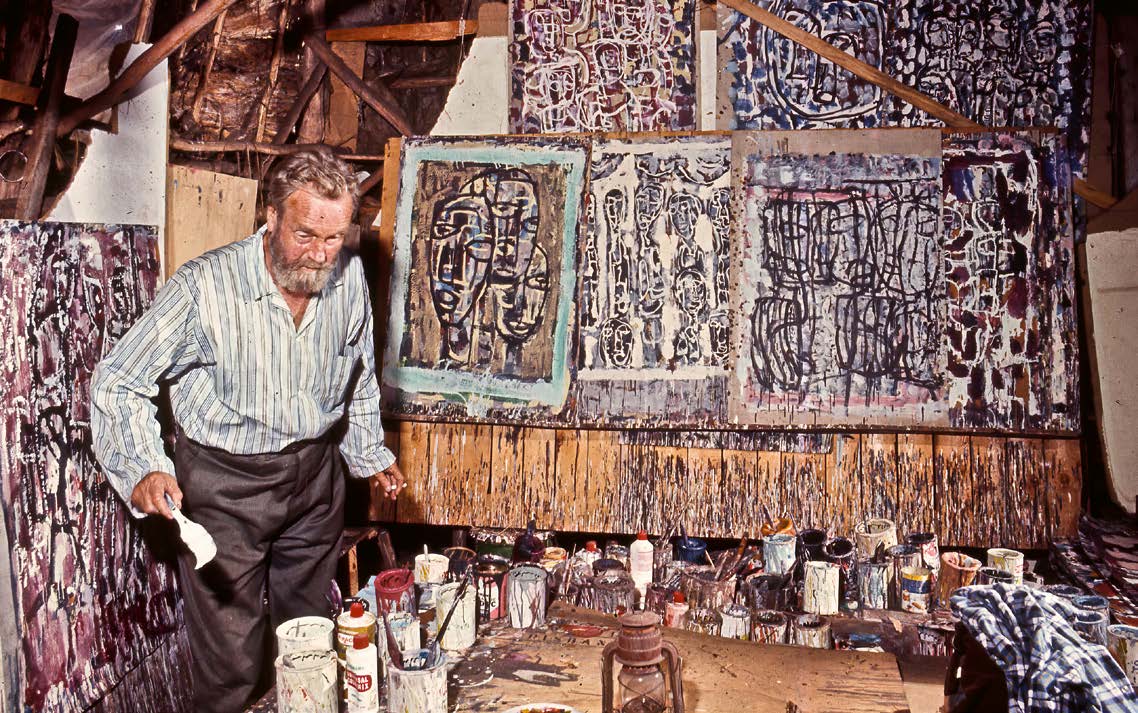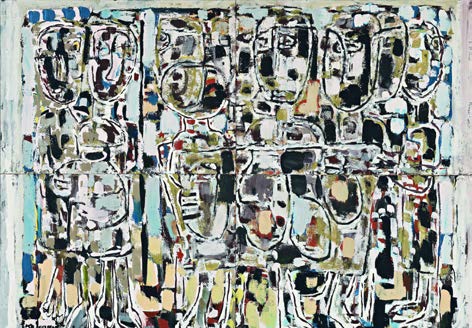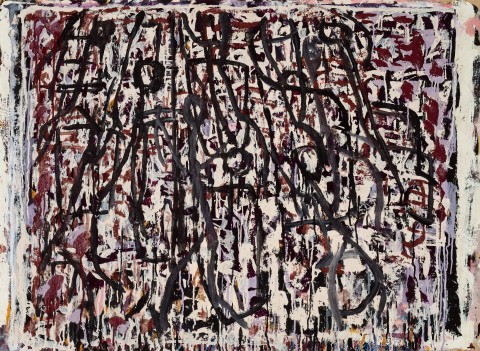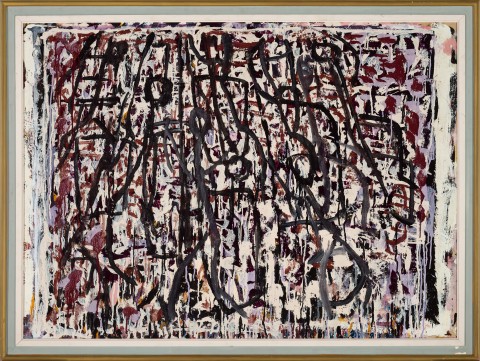Figure group I, 1969
Ian Fairweather
synthetic polymer paint and gouache on cardboard on composition board
76.0 x 104.0 cm
bears inscription verso: FIGURE GROUP I (1969) / NO 10.
Estate of the artist, Queensland
Macquarie Galleries, Sydney
Christie’s, Melbourne, 28 April 1976, lot 500
Private collection, Melbourne and Victoria
Recent Paintings by Ian Fairweather, Macquarie Galleries, Sydney, 28 October – 9 November 1970, cat. 10 (label attached verso)
Ian Fairweather, A Posthumous Exhibition of Paintings and Drawings, Macquarie Galleries, Sydney, 3 – 15 September 1975, cat. 1 (labels attached verso, signed by Mary Turner)
Bail, M., Ian Fairweather, Bay Books, Sydney, 1981, cat. 225, pp. 230 (illus.), 260
3.jpg

Ian Fairweather has been described as ‘the least parochial of Australian painters, an artist of exceptional force and originality’1 and he is undoubtedly one of the most singular artists to have worked in Australia during the twentieth century. Although he is claimed as an Australian and spent many years living here, he had a restless spirit, and the story of his life reads like something borrowed from the pages of an adventure book. Born in Scotland in 1891, Fairweather undertook his formal art education at London’s Slade School of Fine Art, studying under the formidable Henry Tonks and in 1922, being awarded second prize for figure drawing. As a prisoner of war in Germany during the First World War he had access to books about Japanese and Chinese art, and later, studied these languages at night. In 1929, he sailed to Shanghai where he lived for several years – the unique art, culture and philosophy of China exerting a lasting influence on his art. Peripatetic by nature, or perhaps reluctant to establish roots and commit to ongoing relationships, Fairweather travelled extensively – from London, to Canada, Bali, Australia, the Philippines, India and beyond – ‘always the outsider, the nostalgic nomad with a dreamlike memory of distant places and experience.’2
1.jpg

gouache on cardboard
Copyright Agency 2025
In the early 1950s, Fairweather settled on Bribie Island, off the coast of Queensland, where, for the rest of his life, he famously lived and worked in a pair of huts built with materials salvaged from the surrounding bush. Conditions were primitive – no running water, sewerage or electricity – and Fairweather’s handmade bed and chairs were reportedly upholstered with fern fronds.3 Black and white photographs show him working in the dedicated studio hut – often with a pipe in one hand and a paintbrush in the other – where paintings in progress are tacked up on rudimentary, handmade easels. Nearby, tins of paint stand open with brushes ready and waiting to be used. Surfaces are covered with random spatters and dribbles of paint, colours layered one on top of the other creating a visual trace of the pictures that were made there. In these images we see the artist once described as someone who ‘needed to paint like one needs to breathe’ and understand the spontaneity and energy with which he worked.4 Despite the rudimentary nature of his surrounds however – or perhaps because of it – the next two decades witnessed the production of many of Fairweather’s finest paintings and the 1960s saw his art acknowledged in significant ways, with works being included in the landmark exhibition Recent Australian Painting at the Whitechapel Gallery, London (1961), the European tour of Australian Painting Today (1964 – 65), acquisitions for important public and private collections, and in 1965, a major travelling retrospective of his work being mounted by the Queensland Art Gallery.
2.jpg

cardboard on composition board
10 April 2019, Sydney
Driven by a need to paint and charting his own unique path, Fairweather produced paintings that made a profound contribution to the development of Australian art. Combining varied influences and balancing figuration and abstraction, he created some of the most distinctive and important works of the twentieth century.
1. Bail, M., Ian Fairweather, Bay Books, Sydney, 1981, p. 220
2. Bail, M., ‘The Nostalgic Nomad’, Hemisphere, Canberra, vol. 27, no. 1, 1982, p. 54
3. Bail, M., Fairweather, Murdoch Books, Millers Point, 2000, p. 119
4. Ryckmans, P., ‘An Amateur Artist’ in Bail, M., Fairweather, Art and Australia Books in association with the Queensland Art Gallery, Brisbane, 1994, p. 18
5. Ian Fairweather, interviewed by Hazel de Berg, 1965, cited in Bail, 1994, ibid., p. 139
6. Bail, 1981, op. cit., p. 224
KIRSTY GRANT


